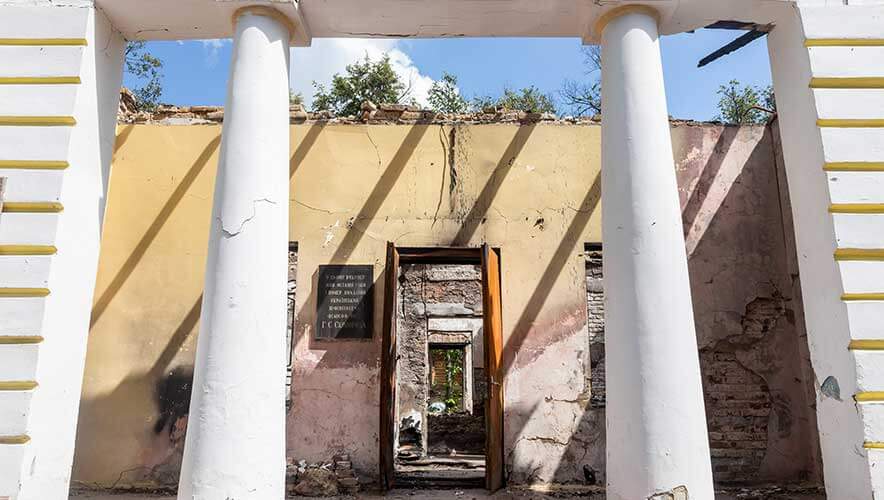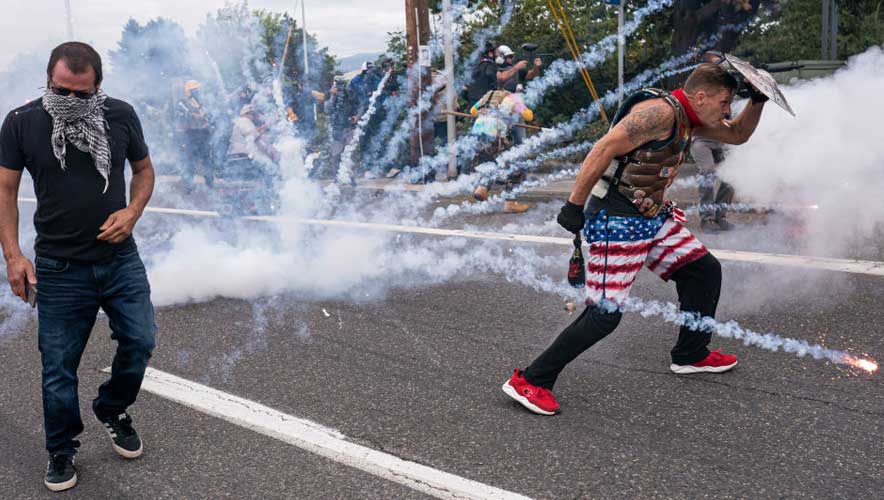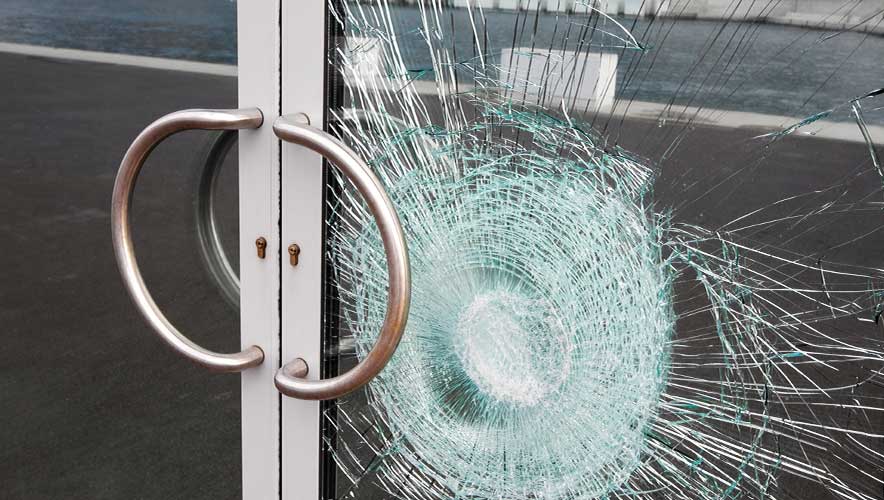Preparing for Civil Unrest and War in Cultural Properties
7 October 2023 will be remembered as a day of terror for Israel. In a surprise attack, Hamas began firing thousands of rockets into Tel Aviv and the outskirts of Jerusalem while rampaging through border towns along the Gaza Strip. As the fighting and counteroffensive continue, thousands have been injured and killed, with several hundred people still held as hostages.
The surprise attack left no time to prepare, and the continued attacks destroyed much of the infrastructure in Gaza, limiting daily provisions of food and water. Services have been severed, and people are struggling to meet basic human needs. Meanwhile, museum curators and staff in Israel were stashing their precious artifacts in bunkers, and more than 100 cultural landmarks in Gaza have been seriously damaged in the fighting.
Similarly, the war in Ukraine started 24 February 2022. Russia launched attacks on land, air, and sea, leaving cities reduced to rubble, homes destroyed, and infrastructure damaged. The UN Educational Scientific and Cultural Organization (UNESCO) reported that due to the conflict, as of 29 November 2023, it had verified damage to 125 religious sites, 144 buildings of historical or artistic interest, 29 museums, 19 monuments, 13 libraries, and one archive facility.
Security’s main priority is always the preservation and protection of human life, whether during an armed conflict or following a natural or human-made disaster. Still, it must be noted that cultural properties and national heritage sites are interrelated with people, making their protection fundamental to human rights, community and social identity, and a sense of place and well-being.
“Natural heritage” refers to natural features, geological, and physiographical formations; habitats for threatened species of animals and plants; and natural sites that are important for science, conservation, or natural beauty. Cultural properties include houses of worship, museums, zoological and botanical gardens, libraries, burial grounds, and publicly placed monuments. Depending on the goals and objectives of the attackers, any of these places could be attacked or face collateral damage.
So, how do we protect cultural and natural heritage from the effects of conflict?
Proactive Steps for Security
Preparing for civil unrest and times of war will require many of the same protective actions. For example, during the racial justice protests and riots of 2020 in the United States and internationally, many building owners placed plywood over windows in anticipation of violence and the forceable removal of merchandise. In the event of aerial bombing in wartime, plywood applied over windows and doors may also provide protection from damage.
The difference between civil unrest and acts of war is often the amount of warning. Usually, there are early indications of upcoming civil unrest in response to a perceived injustice. Yet, the time, locations, and severity of the response is a complete unknown.
At what point should cultural properties begin to implement emergency plans in anticipation of or a response to civil unrest or acts of war? In times of civil unrest, the answer to this question is unique to each community and facility, based on the local level of volatility, potential trigger points or actions, and the perceived level of response or force that will be used to reduce violence. In times of war, there is often no warning, but if the violence starts on the perimeter of a city or region, there may be some time to implement emergency plans.
Cultural properties’ security managers must build collaborative relationships between the cultural heritage community, international and government organizations, nongovernmental organizations, humanitarian organizations, emergency services, law enforcement agencies, and any other group related to security in their area. These relationships should be built during peacetime to facilitate a community of protection during times of unrest and war.
What to Do When a Conflict Is Approaching
If it is known or suspected that an armed conflict or civil unrest is imminent, it is best to take precautions and secure the facility. Store valuables in safes or remove them to off-site storage. Back up computer systems and remove the backup from the premises. Secure windows and doors with plywood. Have extra food, water, and supplies available for any people or animals that will remain on-site during the conflict.
Your facility may be damaged, completely destroyed, or spared. It may or may not be open to the public during the conflict. It may even become a safe haven or a hideout. Armed officers may be stationed at entry points to verify that the people entering are legitimately seeking refuge and not on a mission of destruction. Armed security may also be needed to ensure that the facility is not damaged.
Houses of worship should have plans to protect any people who may reside on the property and secure any items of value using vaults or the safest area within the facility. These designations and instructions should be included as part of a security plan.
Museums should assess the rarest pieces in their collections and determine the best location to secure them. As part of a security plan, museum security teams and curators should prepare a list of artifacts prioritized according to their importance and the allocated space. (Vaults and secure areas should always be included in the construction and design of museum buildings.)
Zoological gardens must consider the safety and well-being of the animals. Storing additional food, water, and supplies on site will be helpful to staff who may be able to provide assistance should the animals remain secure in confined areas. If possible, have several people designated to remain on site. If the animals are not in confined areas, attempts to locate them may be challenging because the noises of conflict may have them scared and hiding. Managers will need to assess the safety and security levels for the staff to venture outside of secured buildings, depending on what animals are loose and what risks are posed by nearby conflict.
Libraries should attempt to protect the most prized books, artifacts, and equipment. Like museums, libraries should have a prioritized list of items to secure in the event of civil unrest or a time of war. If the library contains rare and valuable collections, it is important that security and management know these designations and to where items should be moved. Libraries, like other cultural property buildings, are susceptible to vandalism, fire, and looting. Organizations need to plan accordingly.
What Materials to Prepare
Clearly, there are many aspects of civil unrest and war for security professionals to prepare for, including actions to prepare and prevent victimization, ways to respond during victimization, and plans for stabilization afterward. However, it is important to share this information with all staff, because security managers may not be able to make it to the location and must then rely on others to take immediate action.
Additionally, every facility should have the materials on hand to repair and mitigate damage in the event of an emergency. Store plywood to cover windows and doors, plus the nails, hammers, and ladders needed to install it. Batteries and generators are essential for lighting. Stock garbage bags and brooms for cleanup. A supply of food, water, masks, weapons, and emergency kits may be needed for the staff or the community. Lastly, staff will need to know how to disable an alarm if it is compromised.
Remember that in almost every situation, law enforcement and the military may not be able to respond to a cultural property’s request for assistance during a time of unrest, an attack, or war. Although peacekeeping efforts may shift priorities, ultimately, security professionals for cultural properties are responsible for all protective measures. Even if security leaders are unable to make it to the scene, prior planning and communication with team members will help ensure that security measures are implemented.
For additional reading, refer to the Blue Shield Approach by the Blue Shield International.
Paula L. Ratliff, BSC, MS, is the author of Crime Prevention for Houses of Worship and various articles. She is also a steering committee member for the ASIS Cultural Properties Community.



















